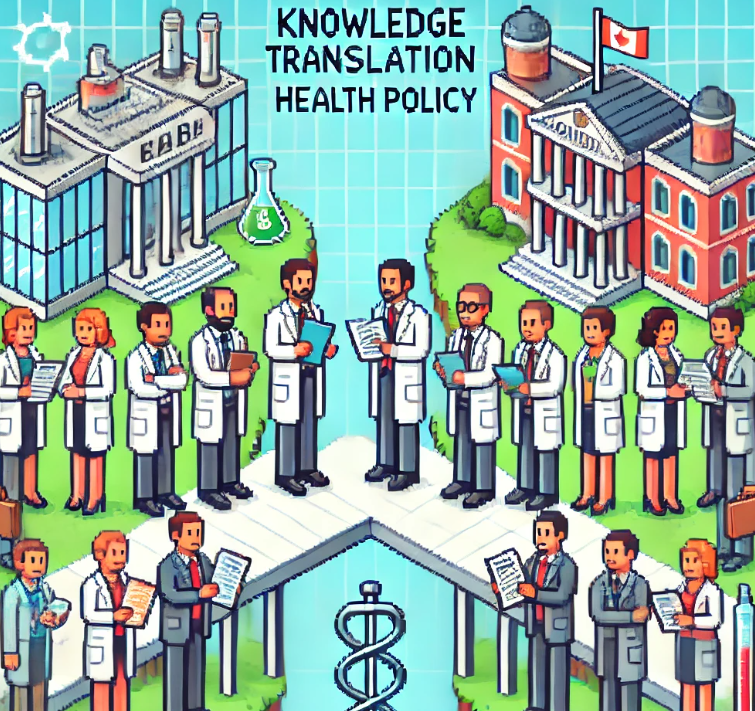
Bridging the Gap: Transforming Research into Policy
In the ever-evolving landscape of healthcare, the journey from groundbreaking research to impactful health policy is fraught with obstacles. Despite the wealth of scientific evidence available, translating these findings into actionable policies often lags, leaving a gap that can have significant consequences on public health. This challenge was the focus of a recent comprehensive review aimed at understanding and improving the mechanisms that drive this translation, known as knowledge translation (KT).
Understanding Knowledge Translation (KT)
Knowledge translation is the process that ensures research findings are communicated, understood, and used to inform policy decisions. It’s like a bridge connecting the world of academic research with the practical realm of policymaking. Without this bridge, valuable insights from scientific studies can remain buried in journals, inaccessible to those who shape public health strategies.
KT involves several key activities:
- Production of Policy-Relevant Research: Ensuring that research addresses the needs and priorities of policymakers.
- Packaging Research for Policymakers: Summarizing findings in clear, actionable formats.
- Knowledge Exchange: Facilitating discussions between researchers and policymakers to foster mutual understanding.
Mapping National KT Strategies
The study we are discussing systematically reviewed national-level strategic documents related to KT in health policy. By examining these documents, the researchers identified common elements and themes that characterize effective KT strategies.
The review involved searching the websites of organizations responsible for KT, focusing on documents from 2017 and updating the search in 2021. Out of 65 documents identified, 17 met the criteria for inclusion. These included national health KT action plans, institution-level KT strategies, and national health and research strategies that included substantial KT components.
Key Findings: Elements of Effective KT Strategies
From the analysis, the researchers identified 13 structural elements and 7 major themes essential for effective KT strategies in health policy. Here are some highlights:
- Structural Elements: Effective KT strategies often include a decision-maker’s foreword, an executive summary, a definition of KT, vision and mission statements, a situation analysis, strategic objectives and actions, along with plans for implementation, measurement, and evaluation.
- Major Themes:
- Production of Policy-Relevant Knowledge: Encouraging the creation of research that directly informs policy.
- Knowledge Exchange: Establish forums and produce written documents to translate research findings into practical policy advice.
- Institutional Capacity Building: Developing the capabilities of organizations to act as knowledge brokers.
- Advocacy and Communication: Promoting the use of research in policy through targeted communication strategies.
Why Should Public Health Practitioners Care?
Effective KT strategies can ensure that policies are informed by the latest scientific evidence, leading to better health outcomes. By understanding and implementing these strategies, practitioners can bridge the gap between research and policy, ensuring that the best available evidence guides health decisions.
Moreover, the review’s findings emphasize the importance of collaboration between researchers, policymakers, and other stakeholders. This collaboration can help tailor research to address real-world problems and ensure that policies are both evidence-based and context-specific.
The Proposed KT Strategy Template
One of the key contributions of this study is a practical template for developing national KT strategies. This template includes:
- Introduction: Context, vision, and mission.
- Strategic Objectives and Actions: Clear goals, actions, and responsible organizations.
- Implementation and Evaluation: Plans for executing the strategy and measuring its impact.
This template serves as a guide for countries looking to develop or refine their KT strategies, ensuring that they incorporate best practices and address local needs.
Hey You! Let us know in the comments!
- How can public health practitioners in your community use the principles of KT to improve the translation of research into policy?
- What are some challenges you have encountered in getting policymakers to use research evidence, and how can these be overcome?
Conclusion
Bridging the gap between research and policy is crucial for advancing public health. This study provides a roadmap for developing effective KT strategies, highlighting the importance of producing policy-relevant research, facilitating knowledge exchange, and building institutional capacity. By adopting these strategies, we can ensure that health policies are informed by the best available evidence, ultimately improving health outcomes for all.
Stay Ahead – Get Your Weekly Public Health Update!
Be a health leader! Subscribe for free and share this blog to shape the future of public health.
About the Author
Dr. Jonathan P. Scaccia, PhD, is a clinical-community psychologist with expertise in public health science and practice. He has led evaluation and research initiatives focusing on health equity, vaccine distribution, and organizational readiness. Dr. Scaccia has contributed to federal suicide prevention programs and vaccine equity strategies. He has been recognized for his impactful work and is a leading voice in advancing public health practices.


